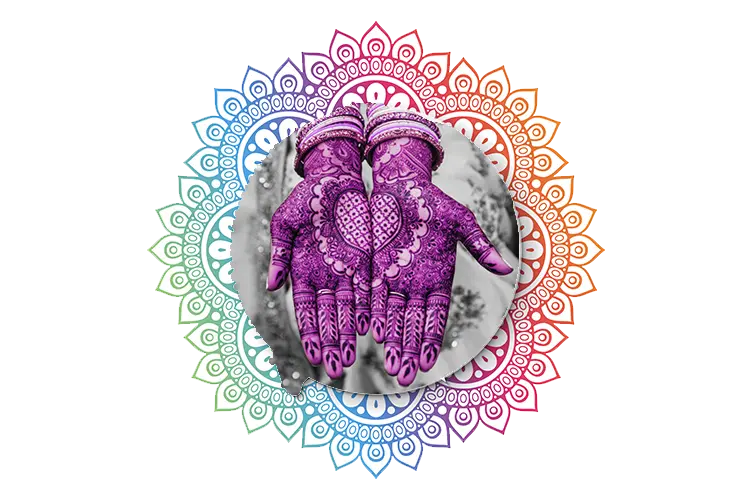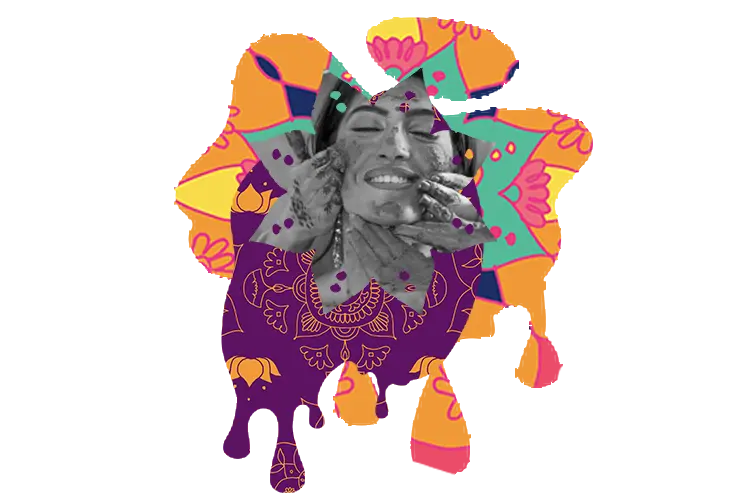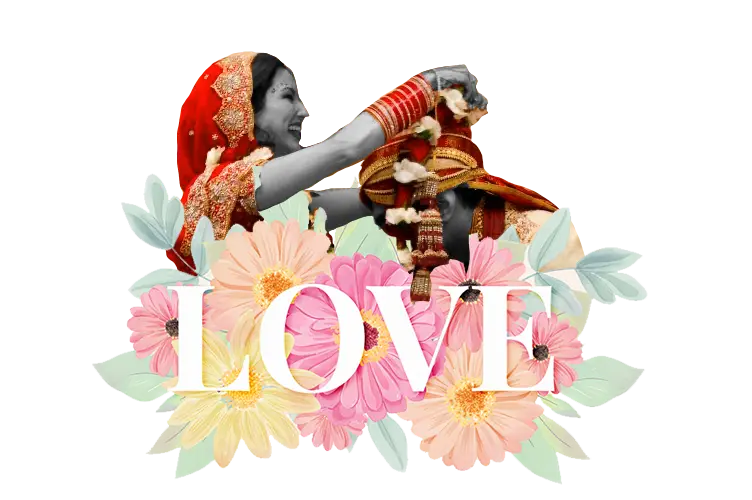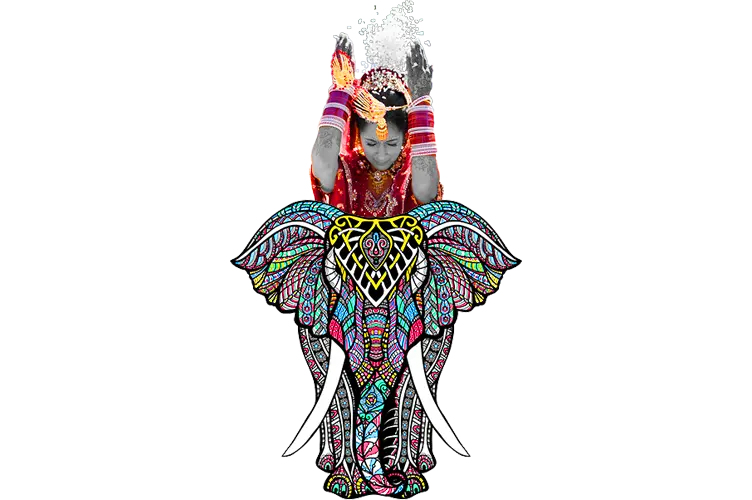
Doesn’t matter if you’ve been invited to a traditional Indian wedding or will be a part of one. Many Indian wedding customs happen over multiple days. Don’t worry, though, we have an entire list of the most crucial Indian wedding traditions you need to know about, from the pre-wedding to after-wedding traditions.
Starting with…

One of the pre-wedding traditions in the Indian culture is determining the Muhurat (the auspicious date and time of the wedding). Based on the couple’s horoscopes, the pandit (the priest) will help the couple figure out the “Muhurat.”
Once that wedding date is set, the bride’s family will traditionally be in charge of invitations. However, in today’s time, the wedding celebrations are for the groom as well, so both the bride and groom are tasked with giving out invitations by hand or mail.
There are also many other pre-wedding rituals, including puja (prayers) often made to Lord Ganesh, the god of wisdom and salvation, and Lord Varuna, the god of Water. There is also the Mehndi (henna) Party, where the day before the wedding, the bride is tattooed with henna for up to 4-10 hours, believing it’ll bring fertility and banish negative spirits.
There are a lot of pre-wedding traditions (even more than we’ve noted here), but even more Indian traditions on the day of. Here is a list of the main ones:

The Haldi ceremony (in the morning) involves painting the bride’s and groom’s skin with a paste of turmeric, sandalwood, and rosewater. This mixture is believed to help them get rid of pre-wedding nerves and look their best on the big day. This will continue for a few hours before lunch and can be with the couple separately or together, depending on whether they want to celebrate the Haldi event together.
The wedding day procession, or Barrat, is the official start of the wedding procession and is one of the day’s most essential and exciting parts. It begins with the groom showing up at the wedding venue on a decorated horse, even an elephant, though for obvious reasons, some modern grooms arrive in a flashy car instead. Then the groom’s side of the family is formally received by the bride’s side with floral garlands, lit candles, and vermilion bindis (red powder).
There is also a tradition called the Joota Chupai custom where the bride’s female relatives steal the groom’s shoes to demand a ransom for the return, or the groom will pay his bride’s siblings and cousins to enter the wedding venue.
After Baraat, the bride will arrive (the Kanya Aagaman), traditionally carried in a doli (a canopy or a highly ornate carriage) by her male relatives, who also hold a large mesh of fresh flowers over her head.

This is where the bride and groom exchange floral garlands before the wedding ceremony begins. These flower garlands represent commitment, happiness, and excitement and happen on a stage different from the “mandap” (a wedding altar) where the religious ceremony occurs.
During the Jai Mala. The groom’s and bride’s family might playfully lift the garlands off the ground while the couple is trying to place the garlands on one another to make it more difficult.
Because of the time chosen by the priest for the mahurat, the Pheras can take place before or after dinner, though typically, photos are taken. Then the bride and groom proceed to the wedding mandap at the predetermined “mahurat.” The wedding mandap is a remarkable structure where the ceremony takes place. It’s usually covered with gorgeous flowers and sometimes has four pillars to symbolize the four stages of life, according to Hindu Vedas.
The mandap is a square shape, with each side occupied separately by the bride and groom, the parents of the bride and groom, and the priest. In the center of the mandap is a small fire where the bride and groom will hold hands to walk around the lit fire four to seven times (Pheras) to take their vows while the priest performs the “Puja” (prayers and rituals). Depending on specific subcultures, this part of the wedding can last for a couple of hours.
This is when the groom places a line of “sindhoor” leading from the bride’s forehead to the part of her hair, marking his fiance as a married woman. The Sindhoor is a vermillion or red-orange powder mixed with water to form a paste. The groom will also tie a mangalsutra (or sacred necklace usually made of gold and black beads) around the bride’s neck to symbolize their marital status.
The Aashirwad ceremony is when the elders bless the couple and give them their best wishes for a happy life together as they prepare to leave. The bride’s mother will also break a coconut at the doorstep as a sign of good luck for the newlywed’s new adventure together.

After the Aashirwad, the Vidaai is done, which is a very emotional moment when the Indian bride says goodbye to her family to start her new life with her husband. The bride will also toss rice behind her as she leaves in a sacred way to bless her loved ones and thank them for all the years of nurturing.
The Haldi, Mehndi, and Sangeet are all done within three days and are considered a vital part of celebrating the new couple in the Indian culture as they are typically much longer than the typical American wedding.
The price of the wedding party is typically split between the couple and their parents, 50/50. However, traditionally it’s usually the bride’s parents who pay, or if one side insists on more guests, one side of the family might pay more.
The amount of the cash gift varies and is personal to each guest, though if you’re giving cash and are used to American culture, you might want to round numbers like $50, $70, or $100. In Indian culture, they never give a gift ending in 0, so the amounts typically end with one, such as $101 or $1001.
Traditionally, alcohol is not served at Hindu weddings, primarily if it is being held at a temple. However, modern Indian weddings sometimes include alcohol during the pre-wedding festivities and the reception, though alcohol won’t be present during the ceremony.
The groom has to be a minimum of 21 years old and the bride 18 years old at the time of their wedding, and the couple should only be in a relationship if their custom permits them to get married, this includes being sapindas (cousins).
With all that said, almost all Indian weddings are rich in bright colors and a nearly endless celebration of the bride and groom with dancing, singing, prayer, and tons of ceremonies specific to their culture. If you want to know more about culture-driven weddings like Korean, German, or Nigerian–read about it all on our site, The Groom Club.